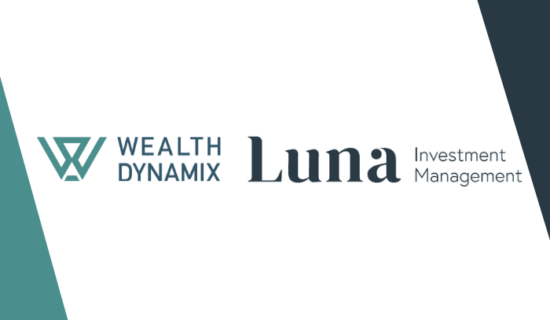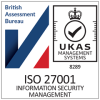Darell Miller, Managing Director – APAC at Wealth Dynamix, sheds light on the evolving landscape for relationship managers in Asia. He summarises the upcoming trends and themes in Asia’s Wealth Management as A-HA: Advisory, Hybrid, Alternatives. He examines each in brief and how combining all three can deliver transformational opportunities.
We all know when we have an “A-HA!” moment. That perfect time when everything comes together. We suddenly understand that complex problem we have been grappling with. The clouds part, and the way ahead is clear.
One of those moments is coming for APAC wealth management in 2023. 2022 was certainly a complex struggle for many in wealth management. Global bear markets, resurgent inflation, heightened geopolitical risks, the tail end of a pandemic, and a full-scale war in Europe have led to challenging conditions in 2023, to say the least. Many firms have been tested in the market, contributing to the 41% of affluent Asian clients who were expected to switch managers in 2022, according to Accenture.
So why is 2023 an A-HA moment for APAC? Let’s break it down:
A = Advisory
H = Hybrid
A = Alternatives
Each one of these is a substantial strategic shift in wealth management across APAC, with studies by Deloitte, Accenture and Standard Chartered this year have covered some or all of these themes. Firms that can harness all three aspects together are likely to see a clear blue sky.
We examine each in brief below and how combining all three can deliver transformational opportunities.
Advisory (services)
Accenture published a detailed study on wealth management in Asia in 2022. It had input from 10 of the largest wealth managers in Asia (including HSBC, Credit Suisse, Standard Chartered, Julius Baer, CICC, Maybank and Barclays Private Wealth).
One of the most striking points in the survey is that providing advisory services is key to winning the lion’s share of a client’s assets. Asian clients who are happy with the advisory services of their primary wealth management firm hold an average of 60% of their total assets with that firm, more than twice the amount of assets held with their secondary firm (29%).
This is not just focused on the older generations of investors. Standard Chartered found that younger (18-35-year-old) investors are 63% more likely to use a professional adviser.
Private banks and wealth managers wanting to win a greater share of clients’ wallets across the generations need to offer advisory services relevant to their clients at scale. How to do that profitably in an era of fierce competition for both relationship managers and clients is the question firms are facing.
Deloitte, offers three approaches:
- Intimacy: built through long-term relationships as well as frequent and empathetic engagement.
- Relevance: solidified by solving their key needs in a timely and effective way, even when those needs stretch beyond traditional offerings.
- Perceptiveness: demonstrated by identifying their needs and solution options, both explicit and implicit.
Achieving these more intimate, relevant, and perceptive client relationships cannot rely on highly talented relationship managers alone. Deloitte and Accenture both recommend leveraging a technology platform that enhances the capabilities of the relationship manager. This process helps free them from mundane, repetitive administrative tasks and gives them access to deeper insights driven by relevant client-specific data and recommendations.
Hybrid
Asia’s leading wealth management firms have set ambitious goals. Accenture found the region’s firms are, on average, seeking to nearly double assets under management (AUM) by 2025, and boost revenues by almost 60% compared to 2021. To do this, firms need to retain existing clients, increase their share of the client AUM, and attract new ones.
The current average revenue per relationship manager is US$1 million, observed by Accenture in its “Asia Relationship Manager Survey”, but this will need to increase substantially to meet 2025 goals. In the survey, relationship managers told Accenture they spend half of their time on non-revenue generating activities, a fact exacerbated by having to use an average of five different tools or applications for each key activity.
As clients grow increasingly sophisticated, they want to access a wider range of asset types (see Alternatives below). This evolution creates a need to equip relationship managers with data, insights, and workflow that enable them to focus on the activities that grow their client base and AUM – and not just administrative tasks. This combination of the personal and the digital can enable wealth management firms to reap a substantial reward in growing profitability at scale.
Indeed, Accenture believes: “The benefits of such an approach could be significant, including an estimated return on investment (ROI) of between three- and seven-fold over three years for successful programs. ROI is driven by how well the firm manages the key value levers of revenue uplift, productivity uplift and qualitative benefits. Using a vendor solution also has the potential to cut the total cost of ownership.”
The digitally-enabled relationship manager has the potential to service significantly higher numbers of clients and AUM. In Asia, it is not uncommon to see AUM growing between 20% – 40% year on year in wealth managers taking this approach.
Alternatives
In recent years, the discussion around alternatives has primarily focused on digital assets. Given the multiple setbacks this year, it might have been expected that appetite for these would have dropped. However, Standard Chartered found that two-thirds of investors surveyed held digital assets, and a third of them believed them to be a longer-term investment. Whilst this is skewed towards younger investors (18-35-year-olds), over a third of those aged over 55 plan to increase investments into digital assets next year.
Indeed, Accenture sees alternatives as a substantial opportunity for Asian wealth managers, but most firms ignore it. According to its analysis, digital assets represent a US$54 billion revenue opportunity for Asian wealth managers – but only one-third of them have plans to offer a digital asset proposition.
There are, however, other drivers that are pushing HNWIs and even the mass affluent to look at wider alternative asset classes. The combination of a high inflation environment and the global bear market is causing investors to reconsider their holdings of traditional assets. In Standard Chartered’s “Wealth Expectancy Report 2022”, Asian investors listed inflation (34%), the uncertain global economy (27%), and the threat of recession (22%) as their top concerns. In response, alternative assets such as gold have received greater attention, with just under 40% of respondents saying they have invested in the precious metal because of inflation.
Outside the more obvious alternatives, there is substantial interest from HNWIs to access private markets. These assets can range from private equity to real estate, hedge funds and private debt, which generally involve trading liquidity for non-correlated returns. Typically, these types of investments have been the preserve of institutional investors and UHNWI, but there has been greater interest from a wider range of investors. UBS noted that over 50% of its APAC family office clients are now investing in private markets.
This theme was discussed in depth at the Asian Private Banker 2022 Summits in Hong Kong and Singapore. Here, private banking heads from across the region in Credit Suisse, UBS, UBP and Kiatnakin Phatra Securities, all of whom are seeing substantial asset allocations to private markets from within their client bases.
The access to these markets is broadening, moving towards the mass affluent space. WealthTechs like Moonfare for private equity, and ADDX for private credit and venture capital, are opening up opportunities to the mass affluent with investments as low as US$10,000. For Asian wealth managers who aspire to win a larger share of the total investable assets of their clients, having an alternative asset offering is now an essential piece of their platform.
Time will tell if 2023 is an “A-HA” moment for the APAC region. In the meantime, for a more detailed examination of how the hybrid approach is changing the face of wealth management, download our eBook: How Hybrid Servicing Can Transform Your Wealth Management Firm.





